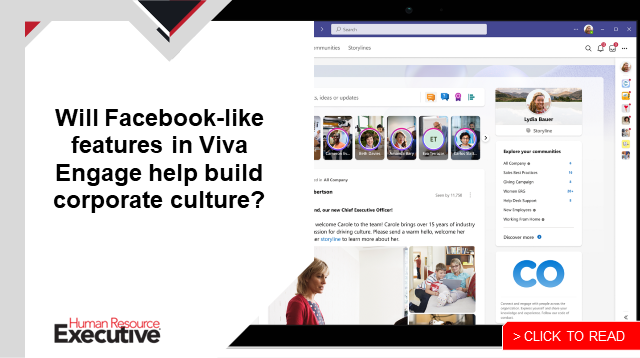Throughout the year, we have described the means and methods employers should use to support organizational transformation. While this information can help HR and business leaders prepare, socialize, engage and progress, it doesn’t specifically address one of the biggest elements of large-scale transformation: cost.
Recent stories of mass layoffs are a harsh reminder of the human cost of relentless change. Whether such moves are the result of a transformation made too late or the necessary actions to keep a company afloat, we cannot ignore that both the top and bottom line put one’s stated values, operating principles and people strategies to the ultimate test. And while not every transformation may result in a reduction in headcount, leadership will understandably want to know what the organization will gain from its investment. In most situations, this means preparing a formal C-level business case with truly defensible outcomes.
Elements of a business case
A business case is a qualitative and quantitative summary of why an organization should or should not move forward with a project or initiative. While organizations will have variations in formatting and details, there are standard elements that every case should contain:
- The Ask: Be clear about what you are requesting from leadership. Sometimes it’s a decision on whether to proceed, defer or decline. Sometimes it’s direction on scope, timing or resources. Sometimes it’s simply an update for ongoing work. Whatever the ask of your C-suite or board, be sure to include it at the beginning with clear and concise language that is familiar to your audience.
- The Why: The primary purpose of a business case is to inform and persuade toward a desired outcome, which means being able to explain why the decision is necessary, the importance of what you’re presenting and the risks of doing nothing. The biggest miss we often encounter is being unprepared for not only the “why?” but the “why now?” The PDF or Word document with information is simply supporting material, so be prepared with real stories about real impacts on real people.
- Financial Summary: You absolutely must include a financial analysis and declare a potential ROI if one can factually be attained. The analysis may be inclusive of licensing, hardware (yes, this still exists), staff augmentation, advisory assistance, implementation and stabilization services, program management, termination fees, incumbent transitions or any and every other element that would require investment. For the ROI, it’s important to feature hard costs—we’re talking both immediate reductions and future cost avoidance. If you’re not ready to share the specifics, outline the work you will undertake to bring that data back to the approvers with an exacting timeline.
- Impact of Change: Depending on the type of transformation, leadership will be keenly interested in understanding the level of potential disruption and impacts by population and geography. Additionally, they’ll want to assess how the timing of this change aligns with other strategic initiatives. On the negative side, they’ll be flagging collisions with other key programs, change fatigue and potential distractions with top-line cyclical processes. On the positive side, they’ll be seeking harmonization with other in-flight transformations, establishing foundations for future growth and bringing agility to areas lacking in real-time insight and action.
- Next Steps: Based upon the various decisions under “the ask,” have material at the ready. If you don’t get approval for your moon shot, have scenarios prepared with detailed impact analysis and trade-offs so it doesn’t become a one or a zero. The goal is socialization, understanding, buy-in, funding and true activation.
Preparing for the business case
 Presenting a business case isn’t something you can do on the fly. It takes time and focus to build a compelling story that withstands scrutiny from those who are traditionally not experts in this field. This requires context, nuance and a keen understanding of the current state of your organization and its ever-changing priorities.
Presenting a business case isn’t something you can do on the fly. It takes time and focus to build a compelling story that withstands scrutiny from those who are traditionally not experts in this field. This requires context, nuance and a keen understanding of the current state of your organization and its ever-changing priorities.
This all begins with curiosity and socialization. Talk to potential stakeholders early and often. Try to understand what their key care-abouts are and what evidence they use to make decisions. This will help you shape your business case in a way that is both familiar and impactful to each audience member. Additionally, and critically, this will also keep the topic top of mind throughout the preparation phase for your transformation.
Next, attempt to gather your data. This can include forensic analysis of your current state processes and pain points, a review of key organizational or department KPIs or OKRs, takt-time studies and cycle times, both fractional and full FTE impacts, as well as comparative benchmarks against both named competitors and aspirational targets. This is not an exhaustive list; rather, it’s intended to get you thinking about the information you’ll need to help quantify your story. Should the sheer act of gathering this information take an absurd number of resources and an immense amount of time, infuse that into the story as yet another item that can only be resolved through the future state solution. As one C-suite executive recently shared, he always gets the data he wants and never really considered what it took to gather it. Bring the effort involved to life and let the data you have amplify the impetus for change.
Ensure your business case is prepared in the appropriate format. Some organizations live and die by PowerPoint; others embrace a memo with a spreadsheet attached. Font, layout, language, flow and presentation structures can serve as an accelerant if properly leveraged. Regardless of your organization’s format, be sure the information has been reviewed for accuracy and can be substantiated by those presenting it.
When it comes to the actual presentation, be intentional about who will cover the different sections and topics. If some of your presenters prefer speaker notes, write them. If others prefer visual prompts, confirm it ahead of time. Practice as a team and designate backups should someone fall ill or be unable to attend. As advisors, we believe it’s important to amplify the voices of those who will carry out the transformation. Each sponsor or champion of the initiative should have a role in the presentation of the business case to add needed context to the words on the page. Never, and I mean never, let a third-party own the presentation of your business case. Your consultants and advisors should stand next to you or behind you, but not in front of you.
Where business cases often go wrong
At IA, every business case we have supported has been approved, including thorny situations where the transformation has stalled. In the role we play, we often inherit the work product of our predecessors and would like you to benefit from the challenges of others, including:
- Failure to socialize: Much like a performance review should never be a surprise to an employee, a business case should never be delivered in a vacuum. If the first time the audience hears about your case is during the final presentation, you are highly unlikely to secure a successful outcome. Help your senior stakeholders thrive via a direct and meaningful connection to the opportunity, an output that can only be achieved through early and repeated interaction.
- A weak “why”: If you are unable to build a concise and specific catalyst for change that is truly bespoke to your organization, you will fail. This is particularly true during times of economic uncertainty, so rally around a compelling true north that will help you navigate through the storms ahead. Don’t be afraid to weaponize your stated values and organizational goals in a case that is impossible to ignore.
- The big picture: We’ve spoken to multiple HR leaders who have done a fantastic job of building a case for an HR transformation, yet they were unable to link it to the larger business strategy. It’s vital to articulate how this transformation will help propel the organization’s strategic vision forward while activating and unleashing the core tenets of what truly matters at this specific moment in time.
- Ignoring the elephant: If part of your story is that highly inefficient and manual processes are in place today due to aging technology and a lack of a unified approach, executive leadership will invariably ask about headcount reduction once you harmonize processes and deploy market-leading tech. While no one enjoys the topic, it’s important to address it upfront. And until you do the analysis, you won’t be able to make the case for or against it. Should you need or intend to reduce headcount, do it kindly. There are too many examples of companies that didn’t.
 Finally, let us offer a quick cautionary word about efficiency-centered ROI: Only lead with hard savings, particularly when it comes to your people. We have seen every possible permutation of third-party cases whereby efficiencies are applied to a mass population with zero likelihood of this hitting the bottom line. For example, some would attempt to position that a 10% efficiency gain per month would calculate as follows: The Total Impacted Population x The Average Fully Burdened Cost Per Person Per Month x 10% = An Absurdly Large Number. While increasing efficiencies across people leaders and employees may be true, those time savings will almost always be reabsorbed into other business priorities by role. Please only apply people savings when changes to your operating model and resulting headcount reduction are a core part of your business case. If that can’t be quantified, we advise focusing on cost avoidance—by gaining efficiencies, the team would be able to support a growing organization without adding headcount over time.
Finally, let us offer a quick cautionary word about efficiency-centered ROI: Only lead with hard savings, particularly when it comes to your people. We have seen every possible permutation of third-party cases whereby efficiencies are applied to a mass population with zero likelihood of this hitting the bottom line. For example, some would attempt to position that a 10% efficiency gain per month would calculate as follows: The Total Impacted Population x The Average Fully Burdened Cost Per Person Per Month x 10% = An Absurdly Large Number. While increasing efficiencies across people leaders and employees may be true, those time savings will almost always be reabsorbed into other business priorities by role. Please only apply people savings when changes to your operating model and resulting headcount reduction are a core part of your business case. If that can’t be quantified, we advise focusing on cost avoidance—by gaining efficiencies, the team would be able to support a growing organization without adding headcount over time.
What it all means
No transformation is free, including those that focus only on business processes and behavioral changes. This is typically a very competitive internal process, so arm yourselves with everything necessary to increase the odds of a successful outcome. If leaders are electing to focus on your program, they are doing so by deprioritizing the time, resources and investment into something else. Through high situational awareness, an intense focus on what matters now, keen insights leveraging data and the application of cultural norms and practices, you materially increase the likelihood that you and your team will secure the precious funding necessary to drive the organization forward. We know you can do it, and we’re here if you have questions.
The post Making the case for the cost of transformation appeared first on HR Executive.